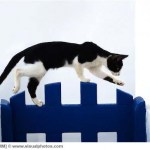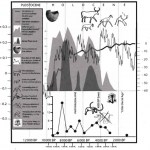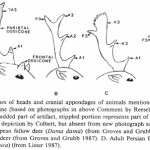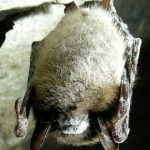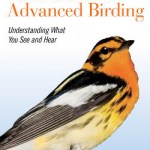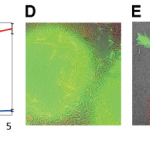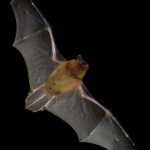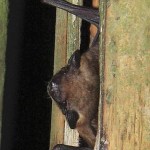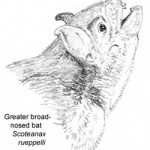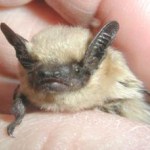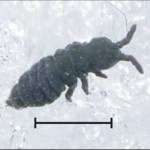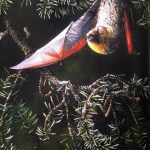Life Sciences
Cats are no doubt one of the most graceful and athletic animals. Researchers from Drexel University, Georgia Institute of Technology, and the University of Manitoba, Winnipeg, Canada have developed a computational model of hindlimb locomotion for a cat. Locomotion is controlled by central pattern generators, which are groups of motor neurons within the spinal cord that control coordinated movements like walking. A website showing this model in action can be viewed here.
Studying how cats walk may provide tools to improve the understanding of locomotion in other species. It may also help in…
"Listen; there's a hell of a good universe next door: let's go." -e. e. cummings
Sometimes, you just need to take stock of what we know, and appreciate how far we've come. A hundred years ago, we thought the Universe consisted of the stars and nebulae in our Milky Way. We thought Newton's Law of Gravity governed it all, and that the other forces -- electromagnetism and a few weird quantum things -- were all there was.
So why not -- all in one article -- go through the entire history of the Universe, from as early as we can say anything sensible to as late as we can say anything sensible? Let'…
Ernst Haeckel's Kunstformen der Natur (Artforms of Nature) was a landmark in biological illustration. Published in 1904, it was lavishly illustrated with 100 exquisitely detailed lithographic plates, including this one, showing nine different species of cubomedusae, or box jellyfish.
It has been known, since around the time that Haeckel's masterpiece was published, that box jellyfish have a unique visual system which is more sophisticated than that of other jellyfish species. They boast an impressive set of 24 eyes of four different types, which are clustered within bizarre sensory…
While chasing up sivathere stuff, I got distracted. Sorry.
Among the most spectacular of extinct bovids is the Plio-Pleistocene African form Pelorovis, famous for its gigantic curved horns. These can span 3 m in fossil skulls, and were certainly even longer in the living animal. Pelorovis was built rather like a gigantic, long-horned version of the living Cape buffalo Syncerus caffer, but differed from it in horn shape, in lacking the massive boss that Syncerus exhibits on its virtually conjoined horn bases, and in having a longer, lower, more antelope-like face.
The type species for the…
I've been giving talks at scientific meetings on educational outreach — I've been telling the attendees that they ought to start blogs or in other ways make more of an effort to educate the public. I mentioned one successful result the other day, but we need more.
I give multiple reasons for scientists to do this. One is just general goodness: we need to educate a scientifically illiterate public. Of course, like all altruism, this isn't really recommended out of simple kindness, but because the public ultimately holds the pursestrings, and science needs their understanding and support.…
I don't do requests on Tet Zoo, but when enough people ask me about the same thing it does get into my head. Ever since the early days of ver 1 people have been asking me about late-surviving sivatheres. What, they ask, is the deal with those various pieces of rock art and that Sumerian figurine - discovered in Iraq - that apparently depict Sivatherium? As most of you will know, Sivatherium was a large, short-necked giraffid, originally described for S. giganteus from the Siwalik Hills of India [shown below in a well-known and oft-used illustration by Michael R. Long*] but later discovered…
Kurt Cobb has a very funny essay that argues that plants and animals have joined with the climate denialists to bring about the better for them "World Without Us":
The reversal of strategy began when domestic cats and dogs watched the Life After People series on The History Channel along with their putative owners. The cats and dogs then described scenes from the show to their wild counterparts. From there word swept through the animal kingdom and was overheard by many plants as well.
Life After People seemed like a utopian fantasy until some enterprising house plants realized that they might…
Over the course of the previous 19 - yes, 19 - articles we've looked at the full diversity of vesper bat species (see links below if there are any parts you've missed). If you've been following the series on an article-by-article basis, you'll hopefully now have a reasonable handle on the morphological, behavioural and ecological variation present within this enormous, fascinating group, and will also have some idea of how the many different kinds of vesper bats might be related to one another. We've seen how bent-winged bats, wing-gland bats, tube-nosed bats, woolly bats and mouse-eared (or…
Description and identification of birds, or anything else, can be done in a rote manner with straightforward reference to details. If information about enough details is available, the identification will be accurate. But as humans we hardly ever do that sort of thing. If you ask someone to describe a car they saw recently, they will not refer to the angle of the back end or the overall dimensions or the specific layout of the headlights and tail lights. A person who does not know the make and model may say something like "It's a hatch back" or "It's an SUV" and in so doing provide…
Symbiosis is everywhere. From the Greek for "living with," symbiosis is simply a close association between two different species in nature. These relationships can be mutualistic, parasitic, or somewhere in between. Bacterial symbionts live inside bodies, like the bacteria that help us and other animals digest our food, and they live inside cells, like the bacteria that live in plant roots and provide their hosts with nitrogen. They can be metabolic, hygienic, or photosynthetic; ectosymbiotic, on the host surface, or endosymbiotic, inside the host's cells. Back in the 1860's biologists…
Among the best known, most widespread and most familiar of vesper bats are the pipistrelles. All bats conventionally regarded as pipistrelles are small (ranging from 3-20 g and 35-62 mm in head-body length), typically with proportionally short, broad-based ears and a jerky, rather erratic flying style.
Compared to the majority of vesper bat species, the better known pipistrelle species (the common European species Pipistrellus pipistrellus and P. pygmaeus) are well known and well studied in terms of ecology and behaviour [composite above shows Common pipistrelle in various poses, with…
By now (if, that is, you've been following this thrilling, roller-coaster ride of a series) we've gotten through the better part of vesper bat phylogeny: we've climbed 'up' the vesper bat cladogram and are now within the youngest major section of the group. Recent phylogenetic studies have recognised a serotine clade (Eptesicini or Nycticeiini), a hypsugine clade (including Savi's bat and a load of relatives), and a clade that includes pipistrelles and noctules (Vespertilionini).
Seemingly fitting somewhere within these three clades - or, perhaps, close to them - are a list of oddballs…
Today, I took out the trash. I may or may not have taken the trash out last week, but I can tell you that the last time I did take it out, whenever it was, I had to drag the trash barrel across ice. Yesterday I went to the gym without a coat or jacket. That made me have to decide if I wanted to go to the locker room to stow the contents of my pockets (car keys, etc.) or just keep those things in my pocket. The grass outside is green. We expect snow on Friday.
Where I grew up, in what is now known among gardeners and cooperative extension agents as Zone 5b (though a short drive from a…
A group of serotine-like bats that occur in North America, Cuba, tropical Africa, Asia and Australasia have often been grouped together in a 'tribe' called Nycticeini (or Nycticeiini: both spellings are used in the bat literature and I'm unsure which has proper precedence). Tate (1942) used this name for an assemblage of species grouped together due to the absence of the second upper incisor. Nycticeins also tend to have a near-horizontal dorsal border to the naked muzzle and a slow, steady flight. The name is obviously based around the generic name used for the so-called evening bats (…
Day 4 - Tuesday
Dr. August Krogh is considered to be the founder of comparative physiology. We talked about the August Krogh Principle in my first entry. This principle states that ""for many problems there is an animal on which it can be most conveniently studied." Dr. Krogh recognized that many animals have unique natural adaptations that we can learn from, like the hibernating animals we talked about yesterday.
This morning I attended an excellent lecture given by this year's August Krogh Distinguished lectureship awardee, Dr. Gerald L. Kooyman, Professor Emeritus, Scripps Institution of…
Once upon a time, a huge variety of small to very small vesper bats - basically all of those that possess a simple tragus, a shortish face, two pairs of upper incisors and two upper and two lower premolars - were lumped together as the pipistrelles. You don't have to have a detailed or expert knowledge of vesper bat diversity or morphology to realise that at least some of these characters are primitive across Vespertilionidae, or have evolved repeatedly in disparate lineages. When these observations are combined with the morphological and molecular differences present among the many species…
We all know of once-respected scientists who ended up going off the deep end, adhering to an unproven idea despite massive evidence to the contrary. Linus Pauling and his advocacy of megadoses of Vitamin C, or Peter Duesberg's descent into HIV denial. It's all the more disappointing when the one taking a dive is a woman, since there are, compared to men, relatively fewer female "big names" in the sciences. So when one goes from views that were, perhaps, outside of the mainstream (but later proven largely correct) to complete science denialism, it makes it all the more depressing. Even worse,…
Having had so much fun during my last sojourn to the University of Maryland, I decided to repeat the experience this past Wednesday. Richard Dawkins was speaking, you see.
Here he is on stage during the introductions:
I attended with Douglas Gill and Clinton Jenkins, both of the University of Maryland Biology Department. And since we are all highly connected VIP's, we wound up sitting in the center of the second row. Impressed? I sure was!
Dawkins had little trouble filling the venue:
There was an overflow room as well. My informal impression was that a significant…
Icefish are not the only "cool" animal out there. It turns out there are actually quite a few species that are resistant to freezing. Here is a brief list of some of my favorites:
Snow Fleas:
These fleas produce a glycine-rich antifreeze protein which differs from other insects suggesting that this was an independent adaptation to freezing (Source: Graham LA, Davies PL. (2005) Glycine-rich antifreeze proteins from snow fleas. Science. 310:461). Scientists have created a synthetic version of this protein that you can read about here.
Wood Frogs:
Professor Ken Storey at Carleton University…
Now that all the fuss about modern-day sauropod dinosaurs has died down, we can get back to the serious business of vesper bats (incidentally, I do plan to cover the mokele-mbembe - in serious fashion - at some point in history). For previous parts in the vesper bats series, please look at the links below.
A group of about 17 species of American bats (occurring from Alberta down to Chile and Argentina) are known collectively as the hairy-tailed bats or hoary bats (Lasiurus*) (together with the Silver-haired bat Lasionycterus noctivagans, they're also sometimes known as tree bats).
Most…
